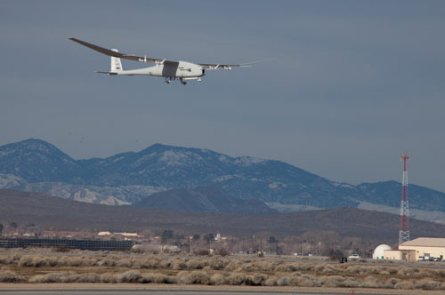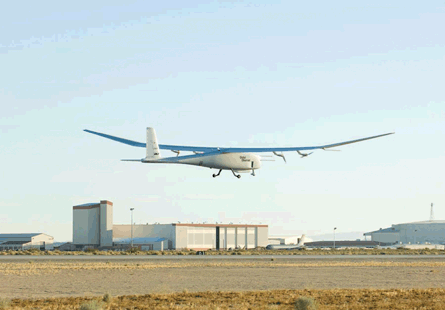AeroVironment's newest unmanned aircraft has successfully made the transition to hydrogen power, the company says, starting with a 4h test flight at Edwards AFB in California. The manufacturer launched flight testing of the high-altitude, long-endurance design under battery power last August.
"Global Observer has moved quickly from development and testing toward demonstrating mission-ready, affordable persistence," says AeroVironment chief executive Timothy Conver. "The speed with which we have achieved this milestone reflects the benefits of an effective government-industry partnership."
Global Observer is designed to fly for five to seven days at a time, at altitudes of 55,000-65,000ft (16,800-19,800m) carrying a 172kg (380lb) communications and intelligence, surveillance and reconnaissance payload. The UAV burns liquid hydrogen in an internal-combustion engine to drive a generator and produce electricity to power four propellers and charge the back-up batteries.
 |
|---|
| © AeroVironment |
 |
|---|
| © AeroVironment |
Ground testing of the hydrogen system began last November with an uninterrupted seven-day mission cycle in a test chamber that simulated the temperature and pressure changes of a high-altitude climb, loiter and descent, the company says.
AeroVironment will ultimately deliver two Global Observers to the Pentagon under a joint capability technology demonstration (JCTD) programme. The company and the military hope to move beyond the initial $120 million JCTD, becoming a programme of record within the US government between 2012 and 2014.
The US Special Operations Command is "working" to find more funding for Global Observer, Conver told analysts in December.
Source: Flight International























